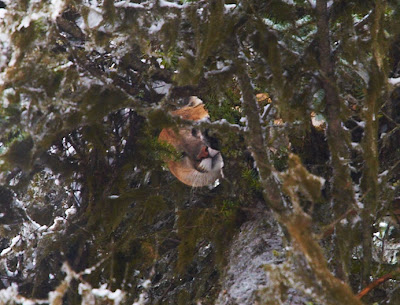Bells attached to my Tri Tronics!
I was never sure if the bells ever made a difference or I was just lucky so I did some research with DNR and BC Ministry of Environment. To date both agencies have a reporting program for wolf attacks on dogs. To date there has only been one report of hounds with bells being killed by wolves.
"To date there have only been one
report of hounds with bells being killed by wolves"
I have tried many different types of bells but the one I found works the best is the traditional sleigh bell. Here are a few other tips when using bells I have learned over the years:
1. Open bells get plugged with snow or mud and stop working.
2. Pop rivet the bells directly to an e-collar or tracking collar. I don't attach it to the dogs regular collar so I don't have to listen to the jingling sound from the kennel or dog box!
3. I found two bells per dog is ideal.
4. Find bells that have a distinguishable sound so you can tell your dogs apart from each other and the those of your hunting partner.
I know hunting where there are wolves can be stressful. I also know that you are far more likely to have your dog killed by a lion if you use only one dog. I hope this little trick helps protect your hounds and gives you some peace of mind like it has for me over the last decade!














